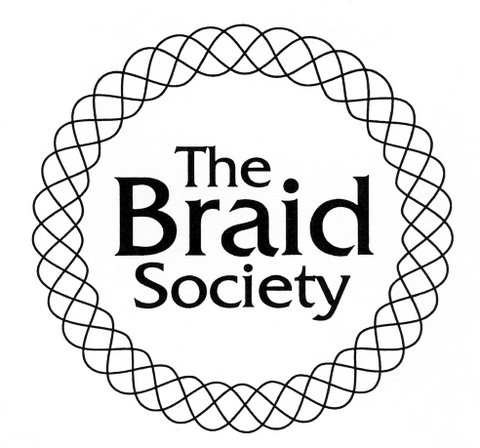| Members can log in by clicking on icon to the right |
|
Nordic and world braids and bands 2022
Lectures
Fist-braiding (term suggested by Noemi Speiser) is a technique for creating round, square and rectangular bands. It was very much used in pre-Columbian Andes during Inka time (14-1500 AD). The braids are worked upwards and with no special tools – only with the hands manipulating 12 to (at least) 92 loose strands. The rectangular and square bands were mainly used to create the cradle of a sling. Often 2-4 slings were stitched together. In this way they could not be used as slings but were only meant to be worn as ornamental headbands. The headband/slings had 2-3 span floats, creating figurative and geometrical patterns. The round fist-braided cords were used at either side of the cradle, and also for other purposes. Some monochrome headbands and patterned belts were also made in this technique. In Tibet, also currently, people make slings in rectangular and round fist-braiding. In Japan round bands with the same structure, but worked in a different technique, are made, using a circular board. Photos:
1. Mummy bundle, Peru 14-1500 AD, with a headband consisting of 2 square fist-braided slings. Photo: Martin Franken.
2. Headband from 4 square fist-braided slings stitched together, Peru 14-1500 AD. Photo: Martin Franken.
3. Square fist-braid in process. Photo: Lena Bjerregaard. |
There is a tradition in Europe for using braids both functional and as decoration. The lecture will show examples of this and try to trace where and by whom the braids were produced. Braids are often just small parts of other textiles and not easy to locate in different collections. The hunt for braids to study and some characteristic structures and their analyses will be illustrated with photos and drawings. |
Distribution of Tablet Weaving in Sulawesi, Indonesia Dutch study of Indonesian textiles since early 20th century tells us that Sulawesi was the island where plentiful tablet weaving has been practiced. This lecture shows the distribution of tablet-weaving in Sulawesi with photos in the power point and some actual tablet-woven bands and clothing on display. These are dagger belts made by the Bugis in the lowlands, jackets with tablet-woven hems by Toraja people and betel bags with tablet-woven straps by Mamasa peoples in the highlands. Among them, only the Mamasa continue to weave on the tablet loom today as others have lost the technique. This lecture will focus on this sophisticated tablet-weaving technique as well as historical misunderstandings on the origin of some bands.
Photos: Left: Detail of old tablet-woven band from Tana Toraja, Indonesia (kamandang), home-spun cotton with natural dye. Center: Bugis dagger belt, National Museum Indonesia. Right: Detail of old brocaded Bugis band, silk and silver thread. |
In this lecture, I will present five different pattern books for hairwork, two printed and three hand-written, all from the 19th century, stemming from Sweden, Denmark, and the US. The books contain different types of patterns and represent different ways of teaching patterns and techniques. I’ll discuss the various kinds of braids which dominate in each book and show braided versions of selected patterns. Finally, I will discuss traditions in how hairwork was taught and how the techniques were passed on in Sweden in the past and today. Photos: some typical examples of hair work, a page from Karoline Heiberg’s handwritten pattern book from the second half of the 1800s, and a photo of three Swedish hair workers working in Karlskrona in the 1890s. |
Is it possible to make a living from handicraft? I’ll discuss being both a craftsman with dreams and a technical person and quitting the good employment and starting your own company. My experiences of making my life puzzle, interests, family, children, teaching, a work with IT/telecom, and selling a lot of things for handicraft. I will speak about what I found was working and what was not possible, happiness, problems, and opportunities. What are the pros and cons? Did I become 4 different people, the craftsman, the teacher, the mother/wife, and the engineer? Or just a person with a lot of things to do? Why do I think the Swedish cultural heritage is worth taking care of, there are so many wonderful cultures in other places in the world? All the things I hope to do in the future! What would I have done if I could start all over again today? |

